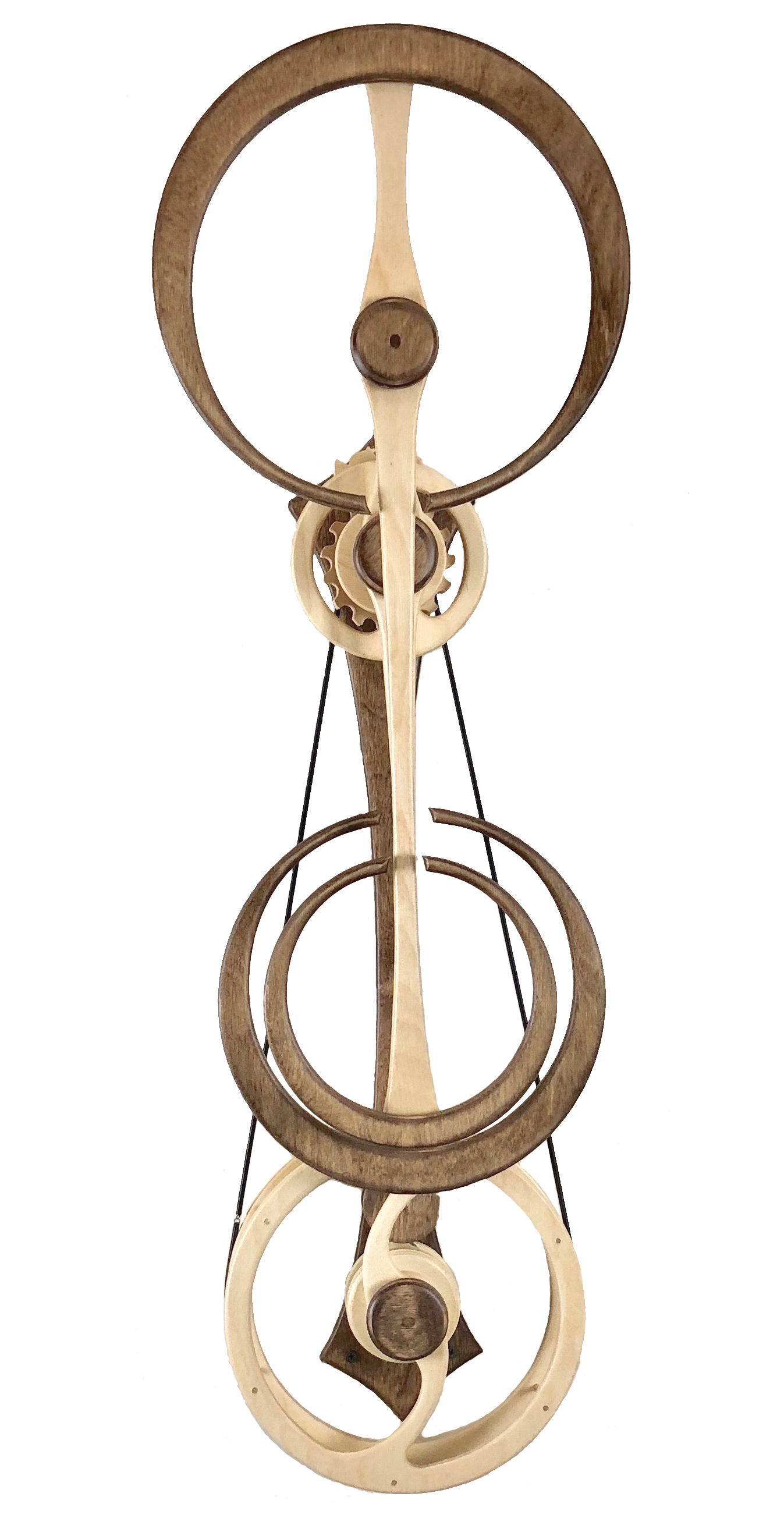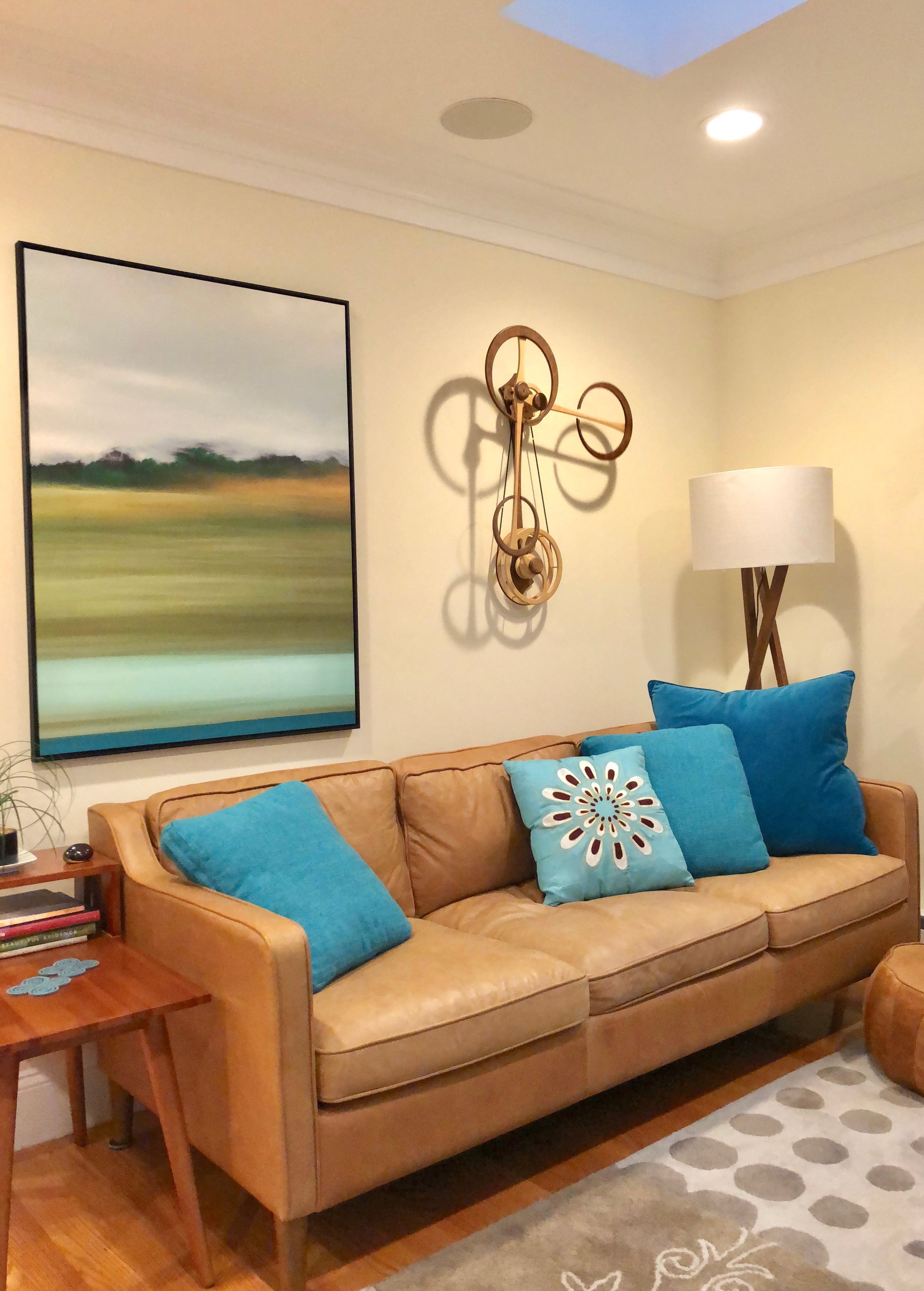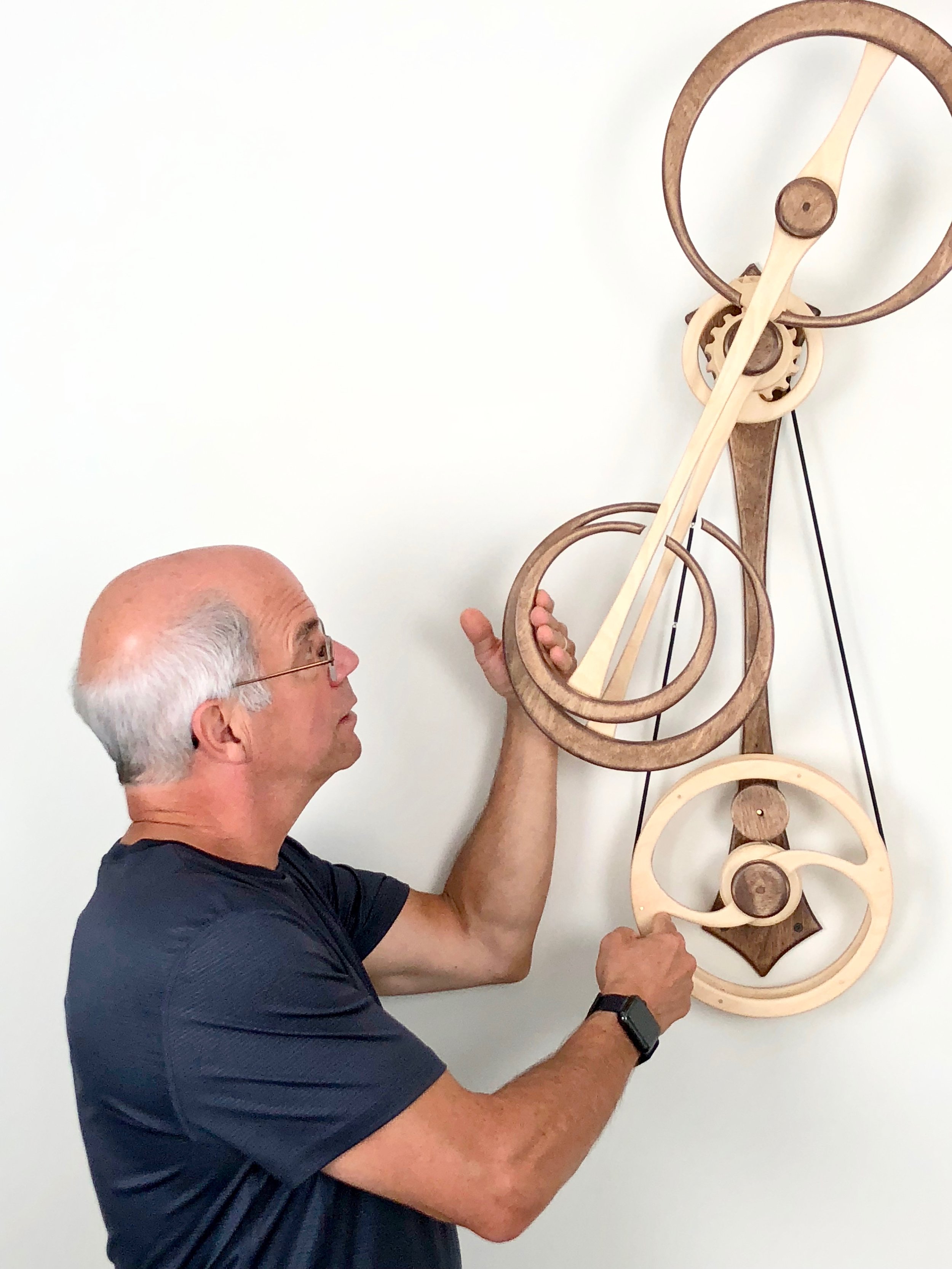Limited Edition of 3
Size: 32” w x 47” h x 6” d
Approximate Run Time: 25 Hours
Price: $4500.00 - opening bid - USA only
Kindala-Celebration © 2021
Edition Sold Out
About Kindal-Celebration
The Kindala concept which has been explored in a number other designs has been re-visited in this sculpture. The mesmerizing slow unfolding of intricate circular designs continues to fascinate me. This is the most complex Kindala pattern set I have attempted. The pattern reminds me of starburst fireworks. Hence the name Celebration.
I use the same base and drive system in both of my long running introductions in the 2021 design period. I like it because it is a step away from the designs like Duality based on pattern wheel only but has the long run time and easy wind that I like to live with. Celebration wins the run time award in the 2021 designs coming in a couple of hours longer running than Boomerang. The Kindala type of motion requires less energy so runs longer.
Why Kindala?
Kindala is a made up word I created by combining Mandala and kinetic. I thought this series needed a distinctive moniker. Every design has a circular design like a mandala and they all move but each has visual distinctions in the wheel design or power structure.














